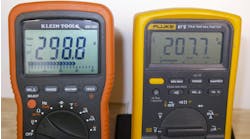© Siarhei Dzmitryienka | Dreamstime.com
Suppose that after a long stretch of failing electronics, failing motors, and high rates of bad test results from cable testing, a consultant finally convinced management to spring for surge protection. His root cause analysis showed that transients were responsible for nearly all of these failures.
Thus, transient protection was installed three months ago. The failure rate has remained about where it was, however. Was the root cause analysis wrong? Probably not:
- Damage from transients tends to accumulate. The seeds of today’s failures were planted yesterday.
- Define “transient protection.” Did someone engineer a tiered system that addresses the known surge voltage values arising from within the plant? Or, was the solution to buy a surge protection box or device and call it a day?
- Is power monitoring in place to capture transient events? Has anyone done a “before and after” analysis?
When implementing a root solution, also implement a way of measuring the root causes it solves. Don’t try to measure its effectiveness by measuring outcomes.
Sponsored Recommendations
Sponsored Recommendations



